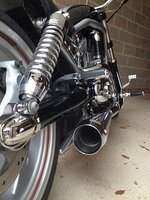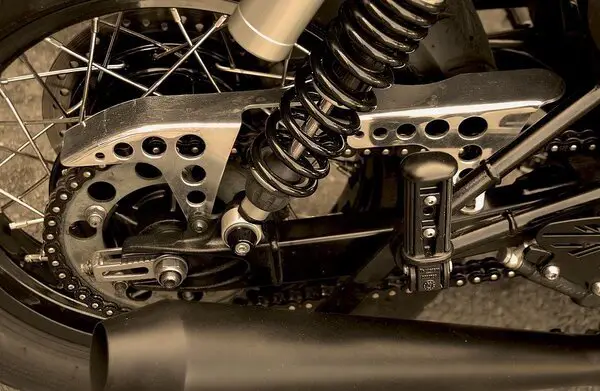Not satisfied with your motorbike’s suspension and don’t want to visit the mechanic for this? Here are some essential tips on how to adjust motorbike suspension on your own.
Your motorbike’s suspension is a critical part as it provides you with riding comfort and stability. Moreover, it allows you to handle your motorbike while accelerating and braking conveniently. Your bike’s front and rear suspension systems put in a lot of work.
Different riders have diverse riding preferences and styles. Therefore, the suspensions should be set according to the riding style and priorities. More advanced technologies are used to make sure users can conveniently make the alterations on their own according to their body and riding style.
So, here’s everything you should know on how to adjust motorbike suspension.
How to Adjust Motorbike Suspension?
Thinking about adjusting your motorbike suspension on your own? This section will explain how you can regulate the motorbike suspension accordion to your preferences and requirements but first, let’s look at why you need to make this adjustment.
Why Adjust the Suspension System of your Motorbike?
Your bike’s suspension system is responsible for various aspects of your motorbike’s performance. The most significant of them all is to provide you with riding comfort on bumps.
With proper settings, you will not feel most of the bumps from the road. But if the settings are wrong, you will experience an uncomfortable ride.
Adjusting the rider’s weight and height is critical as well. Most motorbike manufacturers have their default settings for this, but they also understand that all riders are different and don’t ride the motorbike in the same manner either. Therefore, adjustment is mandatory here as per the riding style.
Keeping all these aspects in mind, you can imagine there is not even one group of settings that you can label as “right.” Customizations need to be done to the settings to make the ride comfortable according to the rider’s physical attributes and his riding style.
Adjusting your Motorbike’s Suspension:
Adjusting suspension on older bikes was different and more complex. It involved taking out some parts and putting them back in. You also had to handle the fluid viscosity during this process.
However, modern models of motorbikes come with suspension screws, and they have knobs that allow the rider to take the system and get the settings according to the requirements.
How to adjust motorbike suspension involves various steps and tweaks along with test drives to ensure if the settings are right for you.
If you are doing it for the first time, you will have to go through it more patiently as you will be making more changes since you are learning the process while working on it.
Setting Sag & Preload:
Sag and preload work together and refer to how much your motorbike says whenever you sit on it. Therefore, adjusting it means how much your motorbike sag while accounting for your weight. This adjustment is mandatory, but you must keep it in a specific range to get the best results.
For determining the preload, you need to find out the length of a fully extended suspension and when it is at rest. You also need to regularly consider the gear or cargo you will take on your bike.
The percentage method is one of the most widely and accurate methods to determine the preload value. In this method, you divide the rear suspension (fully extended) due to the rider’s sag. The result needs to be close to one-third (30%) of the starting point.
If the result is more than 30%, you need to reduce the preload by spinning that retaining collar on the shock. You will have to spin it downwards if the result is over 30%.
Adjusting Damping:
When determining the adequate amount of preload, tweaking the damping is a bit of a subjective matter. Therefore, it would be better to write your settings down to keep the starting point in mind for later referencing. This setting will have a significant impact on the handling of your motorbike.
Determine the number of clicks on the adjustment knob. You can begin by turning the knob as far as it can go towards the right. After reaching the end, you need to turn it counterclockwise towards the other end and count the clicks as you are turning.
Now, set the knob to the center of both sides. For instance, if the knob has 30 clicks, you need to set the knob to 15. This will serve you best to gauge the rebound. Now do the test ride and see how it handles. If it doesn’t handle very well, you need to make some more adjustments.
Keep your adjustment ranging from one to two clicks and carry-on test driving. You need to turn clockwise for loose and harsh handling.
Adjusting Compression:

Some shocks don’t come with compression adjustments, but if your motorbike comes with these, you can comfortably make the changes to the impact and how your motorbike will handle braking and bumps.
This is very simple to adjust damping, and you need to count the number of total clicks the knobs feature and find the center. Try out the ride and make the adjustments accordingly.
For bikes that come with rear-wheel hop during braking, you need to wind the knobs counterclockwise. If the motorbike feels softer and bottoms out a lot, you need to turn clockwise. If there are no knobs on your bike, you don’t need to tweak it.
Ride Height Adjustment:
Now it’s time to make adjustments to the ride height. With this setting, you can adjust the handling and steering easily. You will be making some adjustments on the rear end with an adjustable eye on the rear shock. It will enable you to alter the length according to your height.
The steering also becomes a lot clearer, and as you have lowered the rear, your motorbike will feel a lot more stable. Raising it will have an opposite effect which involves a lot sharper steering with less stability. This is more of a subjective matter as altering this adjustment depends upon personal preferences more than anything else.
Common Problems of Motorbike Suspension

Are there any common mistakes that you need to avoid while adjusting the motorbike suspension? If you don’t know how to adjust motorbike suspension, you need to evade some common mistakes. Make sure you keep those notes under check at all times. Because with them, you will be able to make adjustments a lot quicker.
You also won’t have to retain any settings in mind and refer to your notes whenever you need them. If you don’t do that, you will have to make the adjustments after many test rides, especially if you do it for the first time.
Moreover, don’t forget to wear all your gears when you are testing sag and preload. Your gear’s weight will add up to the overall weight that is causing the sag and preload. You need to get the reading and its adjustment as accurate as possible for the ultimate ride experience.
Stiff vs. Soft Suspension
A stiff or a soft suspension; which one to go for? Soft suspensions are better suited on off-road conditions or when you’re not riding flat or paved roads. With a soft suspension, handling will be poor, but it will keep your tires on the ground. The stiff suspension will make you feel the bumps more, and your motorbike will feel more of a stiffer unit.
So, shock absorption decreases with stiffer suspensions and vice versa. Stiffer suspension is better suited when you are looking for more control over cornering. If you don’t need much of that, you can always go for sifter suspensions.
If you take those turns at higher speeds, you should go with stiffer suspensions because your motorbike will feel very comfortable handling the turns. But overall, ride comfort is much better if you are looking for softer suspension.
FAQ
What should PSI rear shocks be?
The rule of thumb here is to add one PSI for each pound you weigh. For instance, if you weigh 140 lbs, you need to add 140 PSI and begin the setup process. But keep in mind to use a precise shock pump for this reading.
How can I improve my sagging rider?
You need to change the spring or that shock absorber to get your ride back to where it needs to be. And you have to make the adjustment that might range between 95mm to 115mm. The number differs based on your ride’s geometry, preferences, and riding style.
How do you calculate suspension sag?
For calculating sag, you can go for the percentage method and divide the fully extended rear suspension by the suspension caused by the rider’s sag. It needs to be around 30%, and you will have to spin the retaining collar upwards if it’s low and vice versa.
Conclusion
If you are thinking about adjusting motorbike suspension, you will have to do many test rides to conclude. You also need to wear all the gears to wear when riding on your bike.
This way, you will make the adjustments according to your requirements, including your gear or cargo. You won’t have to deal with many trials and errors, and of course, with adjustments as well.


